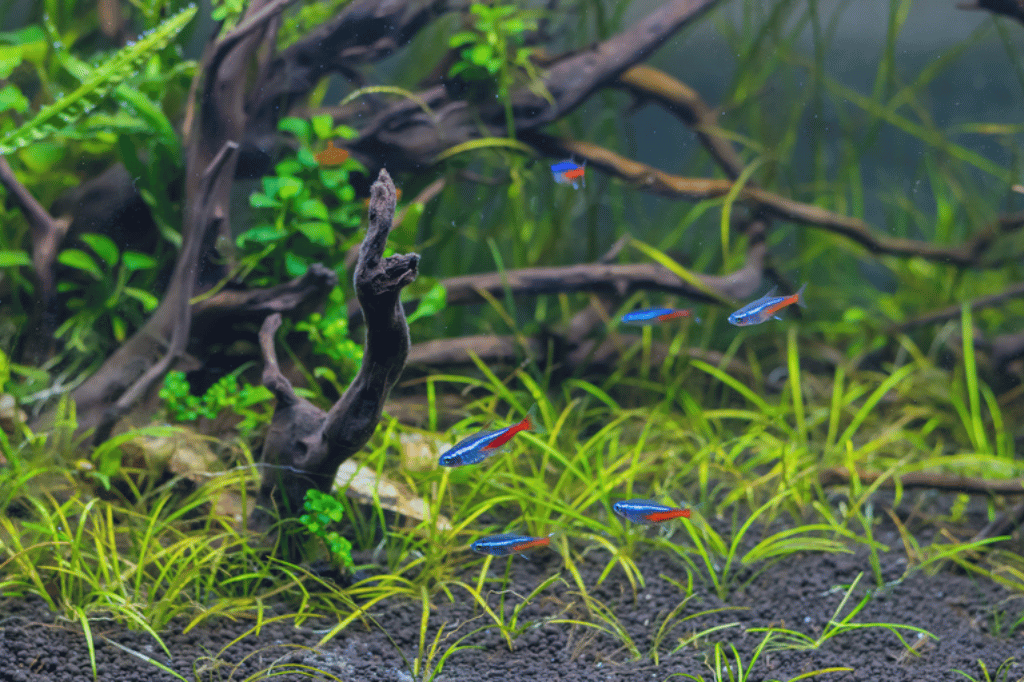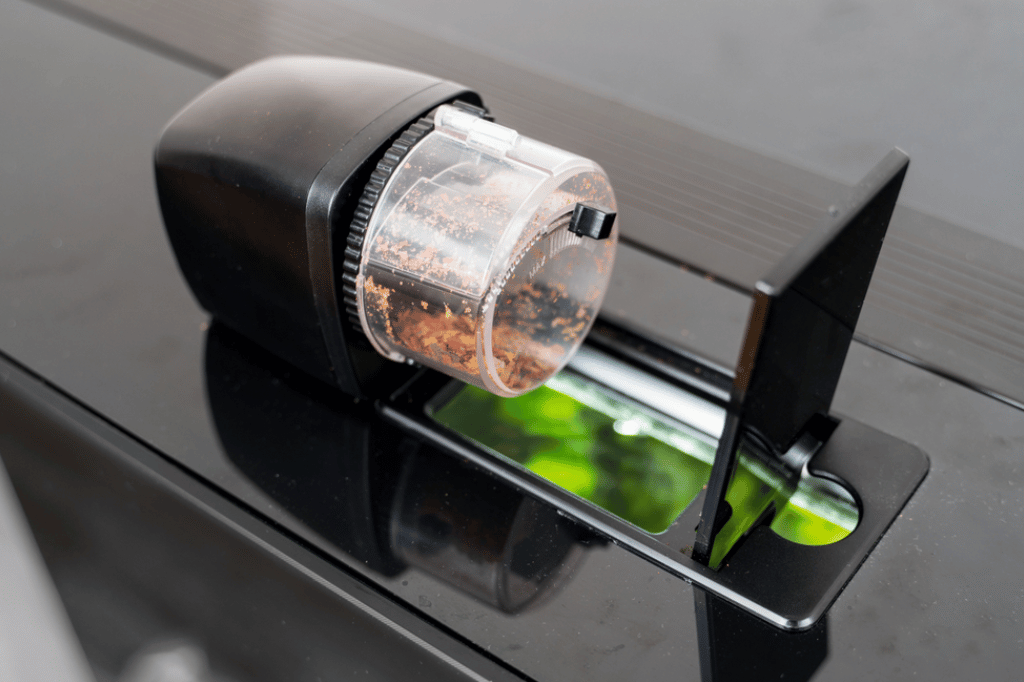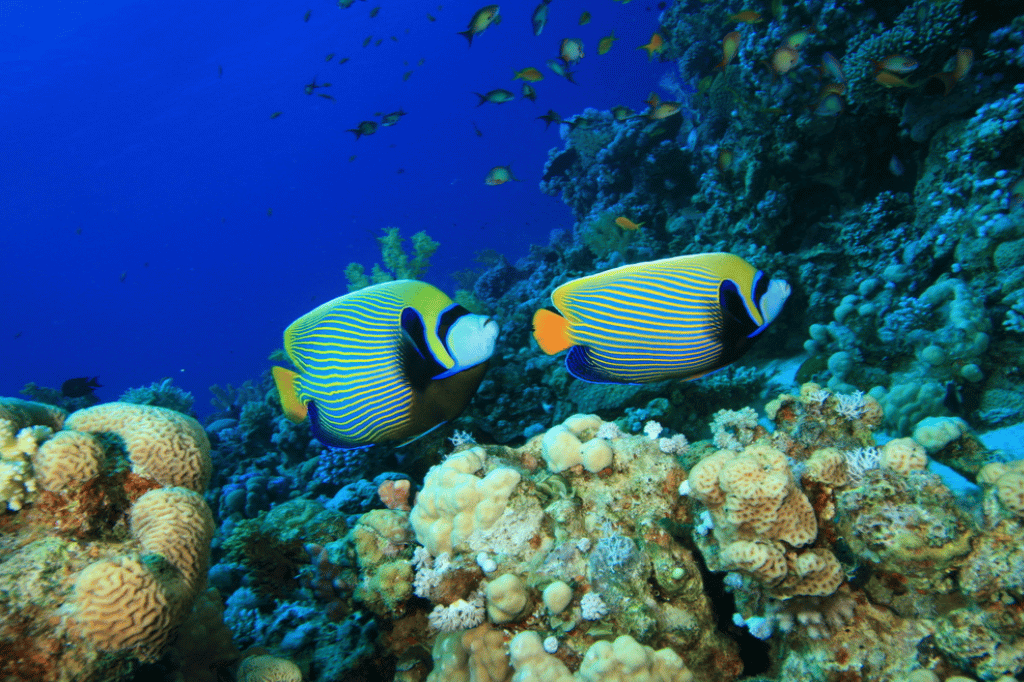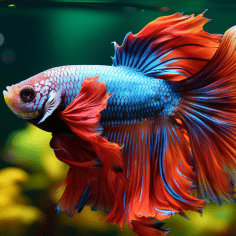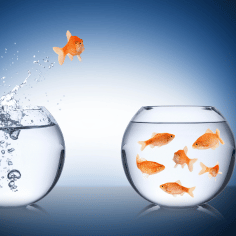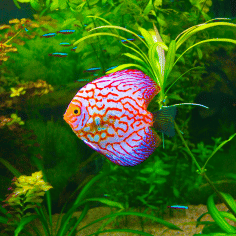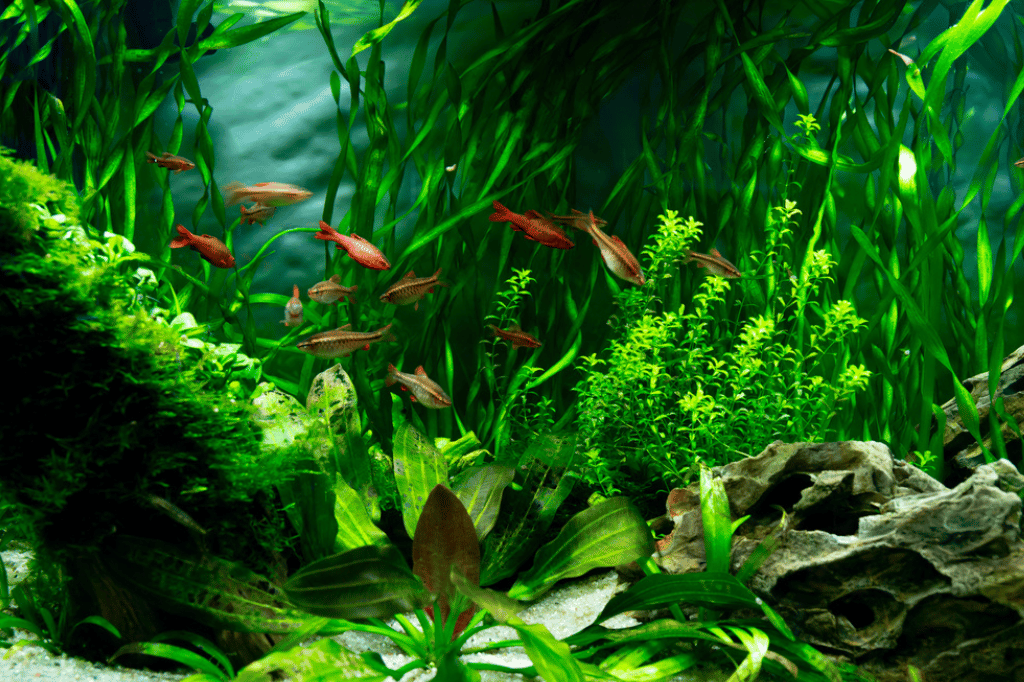The Philippine Blue Angelfish, scientifically known as Pterophyllum scalare, is a stunning addition to any aquarium. Originating from the Amazon River Basin, these fish boast a unique metallic blue hue that mesmerizes hobbyists. They thrive in well-maintained freshwater tanks with plenty of hiding spots.
Their peaceful nature makes them compatible with various other fish species. Proper care includes maintaining a stable water temperature and pH level. Feeding them a balanced diet of flakes, pellets, and occasional live foods ensures their vibrant coloration and health. These angelfish are an excellent choice for both novice and experienced aquarists.

Philippine Blue Angelfish Care: Tips for Vibrant Aquariums By Insiderfish.com
Introduction To Philippine Blue Angelfish
The Philippine Blue Angelfish is a stunning freshwater fish. Its vibrant blue color and graceful fins captivate aquarium enthusiasts. This fish is not only beautiful but also has a rich history and unique traits.
Origins And Unique Traits
The Philippine Blue Angelfish originates from the tropical waters of the Philippines. These fish thrive in warm, fresh waters. Their striking blue color sets them apart from other angelfish species.
Here are some unique traits:
- Coloration: Deep blue hues with a metallic sheen.
- Size: Can grow up to 6 inches.
- Lifespan: Lives up to 10 years in captivity.
- Behavior: Generally peaceful but can be territorial.
Popularity Among Aquarists
The Philippine Blue Angelfish is a favorite among aquarists. Its beauty and ease of care make it a top choice. Many hobbyists appreciate its calm demeanor and compatibility with other fish.
Why aquarists love them:
- Stunning Appearance: Adds a vibrant touch to any aquarium.
- Easy to Care For: Suitable for both beginners and experts.
- Peaceful Nature: Coexists well with other species.
These factors contribute to its popularity in the aquarium community.
Setting Up The Ideal Aquarium
Creating a perfect home for your Philippine Blue Angelfish is crucial. This ensures their health, happiness, and longevity. A well-planned aquarium setup can make a huge difference.
Tank Size Recommendations
Philippine Blue Angelfish need space to thrive. A minimum tank size of 30 gallons is recommended for a single pair. For a community setup, consider a 55-gallon tank or larger. Angelfish grow up to 6 inches and need room to swim.
- 30 gallons for a single pair
- 55 gallons for a community setup
- Height of the tank is important due to their tall fins
Water Parameters And Quality
Maintaining optimal water quality is essential for the health of Philippine Blue Angelfish. They thrive in water with specific parameters.
| Parameter | Optimal Range |
|---|---|
| Temperature | 78-84°F (25-29°C) |
| pH Level | 6.8-7.8 |
| Water Hardness | 3-8 dKH |
Ensure the water is clean and well-filtered. Regular water changes are necessary. Change 20-30% of the tank water weekly. Use a high-quality water conditioner to remove chlorine and other harmful substances.
Monitor ammonia, nitrite, and nitrate levels. Keep ammonia and nitrite levels at 0 ppm. Nitrate levels should be below 20 ppm.
Filtration And Aeration
A good filtration system is crucial. It keeps the water clean and clear. Use a filter that can handle at least four times the tank’s volume per hour. For example, a 30-gallon tank needs a filter rated for 120 gallons per hour.
- Use a filter rated for 4 times the tank volume
- Ensure adequate water flow and surface agitation
- Consider using a sponge filter for biological filtration
Good aeration is also vital. It ensures sufficient oxygen levels in the water. Use air stones or a powerhead to maintain proper water circulation.
Creating A Habitat They’ll Love
Philippine Blue Angelfish are stunning and unique fish. They need a special habitat to thrive. Creating a cozy and engaging environment ensures their happiness and health. This guide will help you set up the perfect home for them.
Plants And Decorations
Adding plants and decorations can make a big difference. Live plants like Java Fern and Amazon Sword are great. They provide natural beauty and help maintain water quality.
Decorations can also enhance their habitat. Choose items that mimic their natural environment. Driftwood and smooth rocks work well. Avoid sharp or rough objects to prevent injuries.

Providing Hiding Spots And Open Swimming Areas
Hiding spots are essential for your angelfish. They reduce stress and offer a safe place to rest. You can use caves, dense plants, and decorations to create these spots.
Balance is key. Ensure there are also open swimming areas. Angelfish need space to move freely. This mix keeps them happy and healthy.
| Plant/Decoration | Benefit |
|---|---|
| Java Fern | Improves water quality, provides hiding spots |
| Amazon Sword | Enhances aesthetics, offers natural habitat |
| Driftwood | Mimics natural environment, provides hiding spots |
| Smooth Rocks | Safe for fish, adds to natural look |
- Choose live plants for better water quality.
- Avoid sharp objects to protect your fish.
- Provide hiding spots to reduce stress.
- Ensure open areas for free swimming.
The Diet Of Vibrant Blue Angelfish
The Philippine Blue Angelfish is a stunning freshwater fish. Its diet is key to maintaining its vibrant color and health. Proper nutrition ensures it thrives and remains active.
Feeding Schedule And Portions
Feed your Philippine Blue Angelfish twice a day. Morning and evening are the best times. Small, consistent portions are better for their digestion.
Each feeding should last only a few minutes. This prevents overfeeding and keeps the tank clean. Use a timer if necessary to stick to the schedule.
| Time | Portion Size |
|---|---|
| Morning | Small pinch of food |
| Evening | Small pinch of food |
Nutrition: Live Vs. Prepared Foods
Philippine Blue Angelfish benefit from a varied diet. This keeps them healthy and happy. Let’s explore the options:
- Live Foods: Brine shrimp, bloodworms, and daphnia are excellent choices. These foods are rich in protein and nutrients.
- Prepared Foods: Flake food, pellets, and freeze-dried options work well. These are convenient and often fortified with vitamins.
Live foods stimulate natural hunting behaviors. This keeps the fish engaged and active. Prepared foods ensure a balanced diet with minimal effort. Mixing both types offers the best of both worlds.
Health And Wellness
Keeping your Philippine Blue Angelfish healthy is crucial. Their vibrant colors and active behavior depend on their wellness. Ensuring they thrive involves understanding common diseases and using stress reduction techniques.
Common Diseases And Prevention
Philippine Blue Angelfish are prone to several diseases. These include Ich, Fin Rot, and Velvet Disease. Recognizing symptoms early can save your fish.
| Disease | Symptoms | Prevention |
|---|---|---|
| Ich | White spots on the body | Maintain clean water; quarantine new fish |
| Fin Rot | Frayed fins, discoloration | Regular water changes; avoid overcrowding |
| Velvet Disease | Yellow-gold dust on skin | Use copper-based treatments; keep tank dim |
Regular tank maintenance is key to preventing these diseases. Ensure water quality is optimal. Test water parameters frequently.
Stress Reduction Techniques
Stress can affect the health of your angelfish. Minimize stress with a few simple techniques.
- Keep the tank environment stable.
- Avoid sudden changes in water temperature or pH.
- Provide hiding spots using plants and decorations.
- Feed a balanced diet with high-quality food.
Avoid overcrowding. Too many fish can lead to stress and disease. Ensure each fish has enough space.
Observe your fish daily. Look for signs of stress such as erratic swimming or loss of appetite. Early detection can prevent serious health issues.
Breeding Blue Angelfish
Breeding Blue Angelfish can be a rewarding experience for aquarists. These beautiful fish require specific conditions to thrive and reproduce. Understanding the basics of breeding Blue Angelfish can increase your chances of success.
Identifying Mating Pairs
Identifying mating pairs is crucial for successful breeding. Male and female Blue Angelfish have slight physical differences. Males are usually larger and have a more pronounced forehead. Females have rounder bellies, especially when ready to spawn.
Observe their behavior. Mating pairs often swim together and clean a surface for laying eggs. They may also display aggressive behavior towards other fish. These signs help in identifying potential breeding pairs.
Creating A Breeding Environment
Creating the right environment is key to breeding Blue Angelfish. Water quality must be optimal. Maintain a temperature between 78°F to 84°F (25°C to 29°C). The pH level should be around 6.5 to 7.0.
Provide plenty of vertical surfaces for egg-laying. Slate, broad leaves, or glass work well. A clean and calm environment encourages spawning. Avoid strong currents and noisy surroundings.
Offer a balanced diet rich in protein. Live or frozen foods like brine shrimp and bloodworms are ideal. This diet helps in egg production and overall health.
| Parameter | Optimal Range |
|---|---|
| Temperature | 78°F to 84°F (25°C to 29°C) |
| pH Level | 6.5 to 7.0 |
| Diet | Protein-rich foods (brine shrimp, bloodworms) |
Follow these steps to increase your chances of successful breeding. Patience and observation are key. With the right conditions, your Blue Angelfish will thrive and reproduce.
Tank Companions
Choosing the right tank companions for your Philippine Blue Angelfish is crucial. They thrive in a peaceful environment. It’s important to select fish that won’t stress or harm them.
Compatible Species
Philippine Blue Angelfish get along with many freshwater fish. Here are some suitable tank mates:
- Neon Tetras: Small and peaceful, they swim in schools.
- Corydoras Catfish: Bottom dwellers that mind their own business.
- Guppies: Colorful and gentle, they add vibrance.
- Platies: Hardy and non-aggressive, they coexist well.
- Rasboras: Active swimmers that stay out of the way.
Avoiding Aggressive Tank Mates
Some fish should be avoided as they can stress or harm your angelfish. Here’s a list of species to avoid:
| Species | Reason |
|---|---|
| Betta Fish | They are territorial and can be aggressive. |
| Red-Tailed Sharks | They may nip at the angelfish’s fins. |
| Oscars | They grow large and can be very aggressive. |
| Barbs | They are fin-nippers and can stress your angelfish. |
Ongoing Care And Maintenance
Caring for Philippine Blue Angelfish is rewarding. This ongoing care ensures their health and happiness. Below is a guide on how to maintain their habitat and monitor their well-being.

Regular Cleaning Schedule
A clean tank is crucial. It helps prevent diseases and keeps the fish healthy. Follow a weekly cleaning schedule to maintain the tank’s cleanliness:
- Remove uneaten food daily to avoid water contamination.
- Change 25% of the water weekly to maintain water quality.
- Clean the tank walls with an algae scraper once a week.
- Rinse the filter media in tank water every month.
Use a gravel vacuum to clean the substrate. This removes waste and uneaten food particles. Ensure to avoid disturbing the fish too much during cleaning.
Monitoring Water Conditions And Fish Health
Monitoring the water conditions is essential. It ensures a healthy environment for the angelfish. Check the following parameters regularly:
| Parameter | Ideal Range |
|---|---|
| Temperature | 24-28°C (75-82°F) |
| pH Level | 6.8-7.8 |
| Ammonia | 0 ppm |
| Nitrite | 0 ppm |
| Nitrate | < 20 ppm |
Use a reliable water testing kit. Check these parameters weekly. Adjust as needed to keep the water within the ideal range.
Observe the fish daily for any signs of illness. Look for changes in behavior, loss of appetite, or visible signs like spots or fin damage. Early detection helps in treating diseases promptly.
Troubleshooting Common Issues
Owning Philippine Blue Angelfish can be a delight. Yet, they sometimes face issues. Let’s explore some common problems and solutions.
Behavioral Changes
Behavioral changes in your angelfish can signal issues. Here are some common behaviors to watch for:
- Loss of Appetite: If your angelfish stops eating, it might be stressed.
- Aggressiveness: Increased aggression can mean overcrowding or poor water quality.
- Lethargy: Lethargic fish might indicate illness or improper water conditions.
Observing these behaviors early can help in taking timely actions. Regularly monitor your fish’s behavior for any sudden changes.
Water Quality Fluctuations
Water quality is vital for the health of your angelfish. Even minor fluctuations can cause stress and illness. Key factors to monitor include:
| Factor | Ideal Range |
|---|---|
| pH Level | 6.5 – 7.5 |
| Temperature | 75°F – 82°F |
| Ammonia | 0 ppm |
| Nitrite | 0 ppm |
| Nitrate | Below 20 ppm |
Regular water testing is essential. Use a reliable test kit to check these parameters weekly. If any values are out of range, take corrective actions immediately.
Advanced Tips For Thriving Angelfish
Philippine Blue Angelfish are stunning creatures. Ensuring they thrive requires advanced care tips. This section covers enhancing their coloration and training them for better interaction.
Enhancing Coloration
To enhance the vivid coloration of your Philippine Blue Angelfish, focus on their diet and environment.
- Diet: Provide a balanced diet rich in carotenoids. Include foods like brine shrimp and bloodworms.
- Lighting: Use full-spectrum lighting to mimic natural sunlight. This helps in showing their vibrant colors.
- Water Quality: Maintain pristine water conditions. Regular water changes and monitoring pH levels are essential.
These elements not only enhance their colors but also contribute to their overall health.
Training And Interaction
Training your Philippine Blue Angelfish can be a rewarding experience. Here are some tips to make the process effective:
- Consistency: Be consistent with feeding times. This helps in building a routine.
- Hand Feeding: Train them to eat from your hand. This builds trust and reduces stress.
- Environmental Enrichment: Introduce objects or plants in the tank. This stimulates their natural behaviors.
Regular interaction with your angelfish strengthens your bond and keeps them mentally stimulated.
Frequently Asked Questions
What Is Philippine Blue Angelfish?
The Philippine blue angelfish is a freshwater fish known for its striking blue color. It’s a popular choice among aquarium enthusiasts. Native to the Philippines, it thrives in well-maintained tanks. This species is peaceful and can coexist with other non-aggressive fish.
What Is The Rarest Type Of Angelfish?
The rarest type of angelfish is the Peppermint Angelfish. It is highly sought after by collectors.
How Big Do Blue Angel Fish Get?
Blue angelfish can grow up to 15 inches in length. They thrive in large aquariums and marine environments.
How Big Do Blue Zebra Angelfish Get?
Blue zebra angelfish typically grow up to 6 inches in length. They thrive in well-maintained aquariums.
Conclusion
The Philippine Blue Angelfish is a stunning addition to any aquarium. Their vibrant colors and unique patterns captivate enthusiasts. Careful attention to their habitat needs ensures they thrive. Embrace the beauty and elegance of these tropical fish. Explore the joys of keeping a Philippine Blue Angelfish in your home aquarium.

